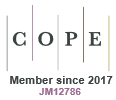Geography of Marine Fungi
Jan Kohlmeyer
Australian Journal of Botany Supplementary Series
13(10) 67 - 76
Published: 1983
Abstract
The geographical distribution of higher marine fungi is controlled mainly by temperature. Additional factors determining the occurrence or absence of fungal species are the presence of certain hosts or substrates, and the availability of oxygen. The vertical distribution of marine fungi appears to be controlled by hydrostatic pressure. The range of distribution of 13 Ascomycetes, two Basidiomycetes and two conidial fungi is discussed, and the world-wide distribution of 10 species is plotted on maps with mycogeographic regions. Examples include a host-specific fungus from the tropics and subtropics (Keissleriella blepharospora on Rhizophora mangle), parasites on algae from temperate and antarctic zones (Spathulospora spp. on Ballia spp.) and a symbiont of two endemic Rhodophyta from New Zealand (Mycosphaerella apophlaeae on Apophlaea spp.). The disjunct distribution of M. apophlaeae in the North and South Island of New Zealand is explained by possible separation of the hosts through plate tectonic movements. Among the saprobic, host-independent fungi from the tropics are Dactylospora haliotrepha, Halosphaeria quadricornuta, H. salina and Varicosporina ramulosa; and from temperate regions are Digitatispora marina, H. quadriremis and Asteromyces cruciatus. Cosmopolitan, temperature-independent species are Lignincola laevis and Nia vibrissa. Haligena unicaudata is a common species at depths between 130 and 914 m in the Mediterranean, the Atlantic and the Pacific Oceans. The temperature response in the laboratory has been tested for only a few species of marine fungi but generally corresponds to the distribution pattern in nature.https://doi.org/10.1071/BT8310067
© CSIRO 1983


